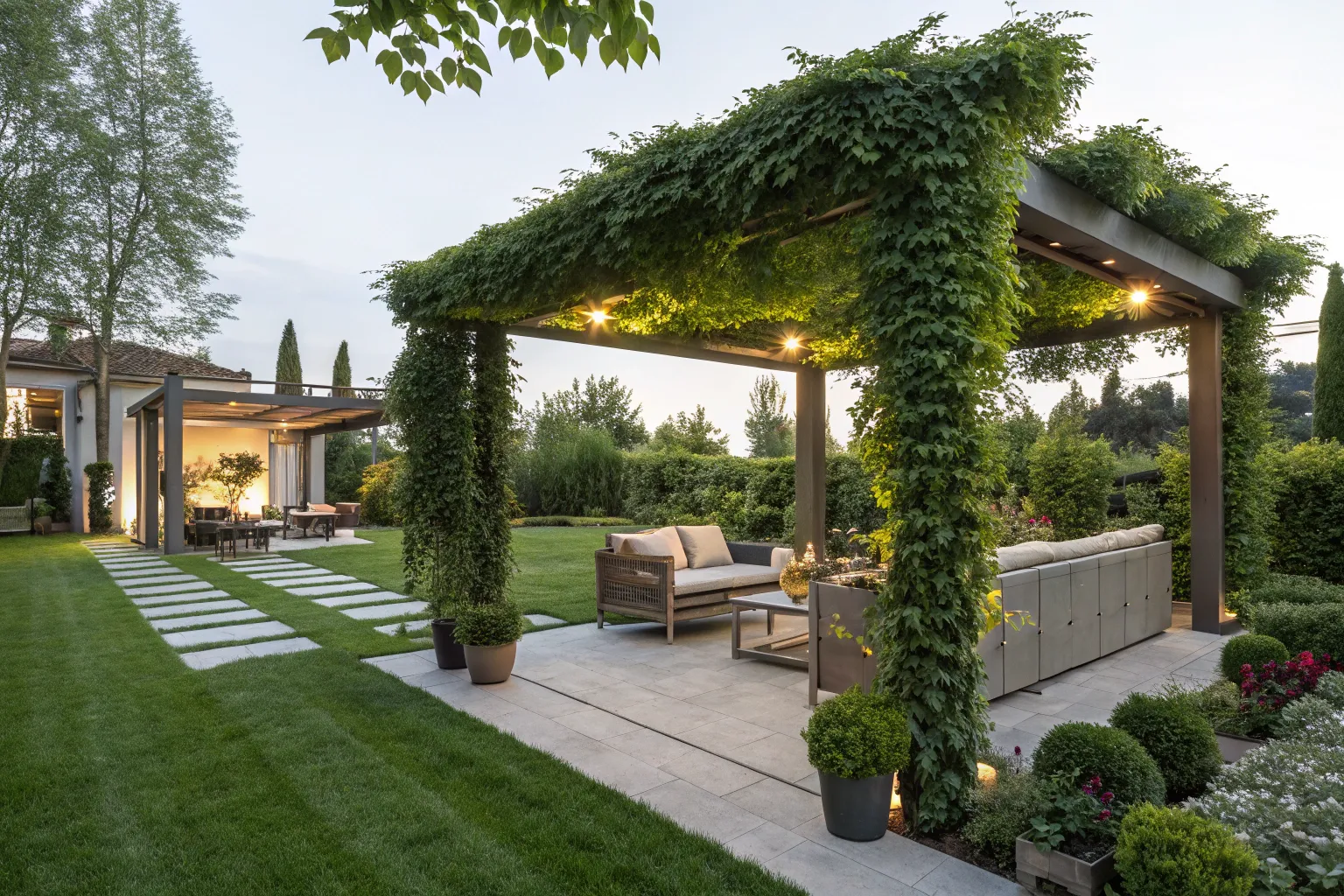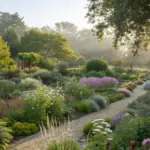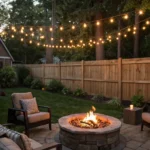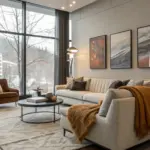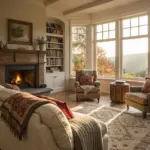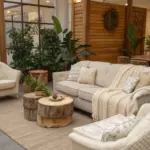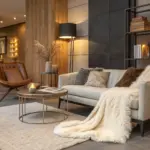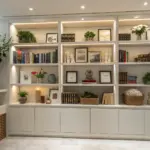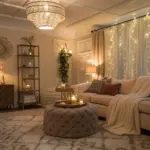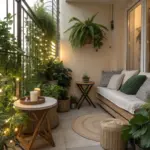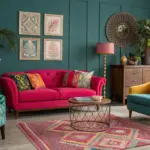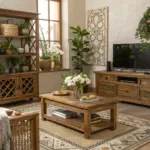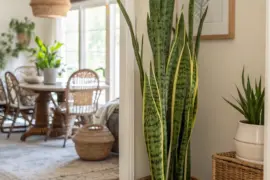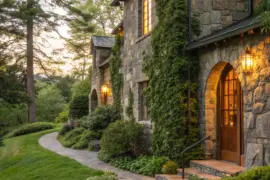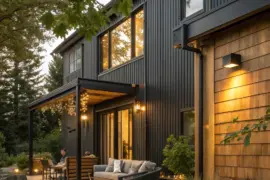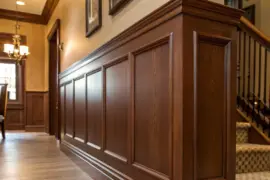Outdoor living spaces have evolved into sophisticated extensions of our homes, transforming simple patios into dynamic, year-round environments. The outdoor living market continues to expand, with Houzz reporting a 50% surge in demand since 2020, driven by our desire for personalized, functional spaces that blur the boundaries between indoor and outdoor living.
The New Outdoor Paradigm
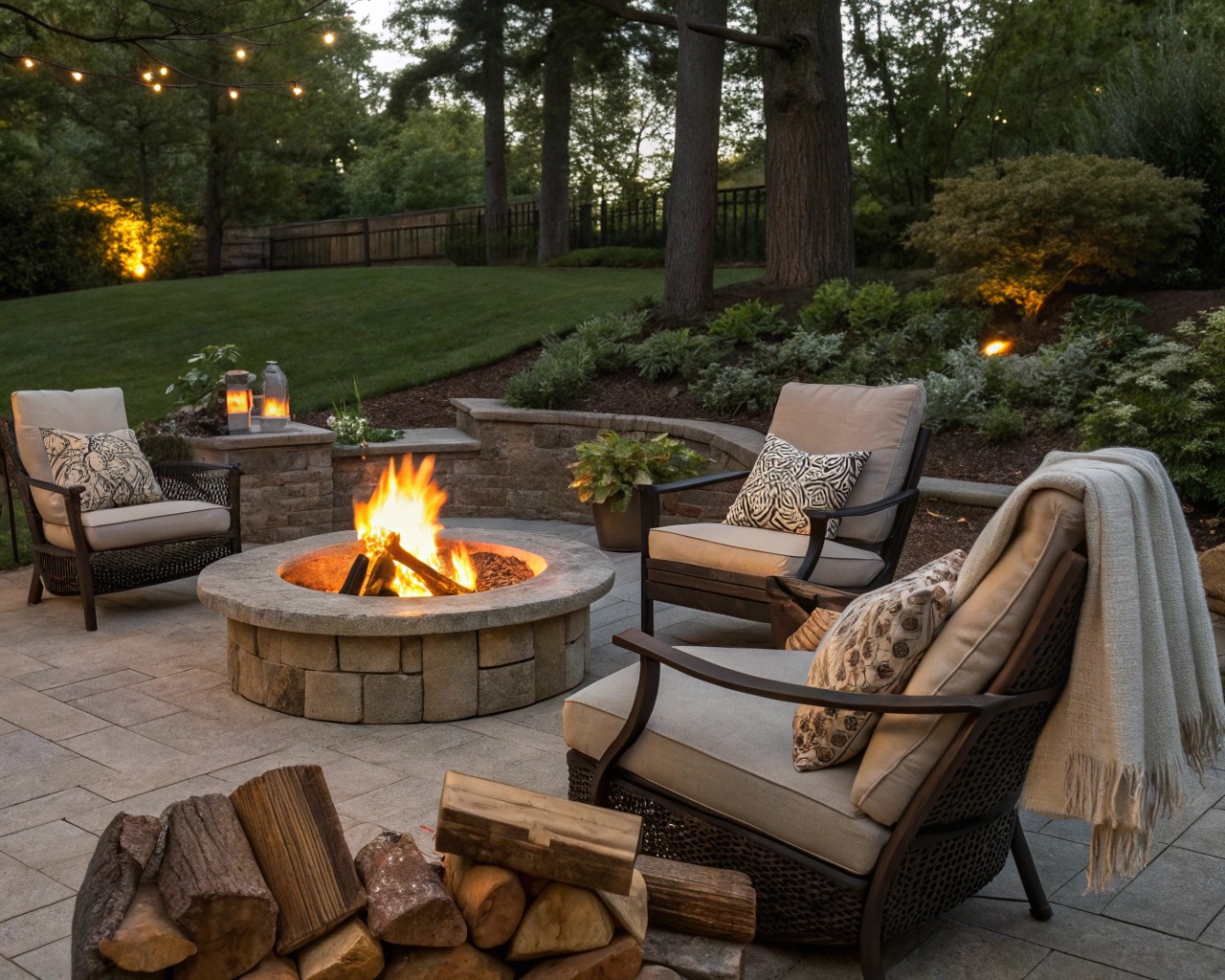
Biophilic Design Takes Center Stage
The most significant shift in outdoor design is the embrace of biophilic principles—creating spaces that foster our innate connection to nature. I’ve observed homeowners increasingly prioritizing designs that highlight seasonal transitions, from early spring blooms to the sculptural beauty of bare winter trees. This approach, known as phenology, creates dynamic landscapes that feel alive and deeply connected to place.
Key biophilic elements gaining traction include:
- Pathways that encourage natural movement through landscapes (up 24% in recent installations)
- Water features providing calming sounds and visual reflections (up 23%)
- Raised garden beds for hands-on plant engagement (up 21%)
- Fire elements offering warmth and emotional gathering centers (up 19%)
Sustainability as Standard Practice
Environmental consciousness has moved from trend to requirement. Modern outdoor spaces prioritize materials that reduce waste, conserve water, and support long-term durability. The most successful projects I’ve worked on incorporate recycled materials, native plant species, and efficient irrigation systems that respond to actual weather conditions rather than preset schedules.
Material Innovation and Color Evolution
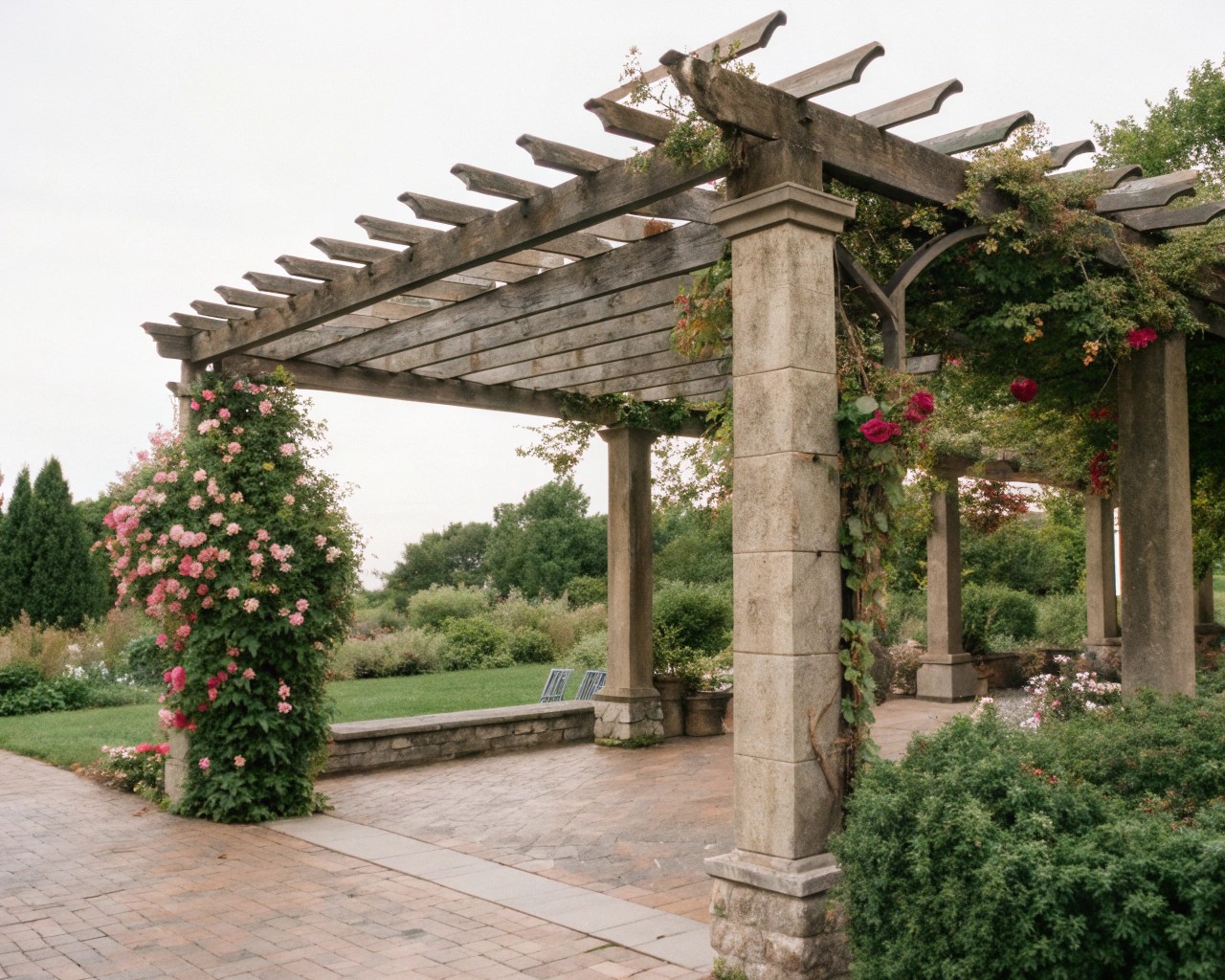
The Rise of Composite and Recycled Materials
Aluminum has emerged as the premier choice for structural elements, offering 100% recyclability without quality degradation. For outdoor furniture and decking, composite materials made from recycled content provide the aesthetic appeal of natural wood with significantly reduced maintenance requirements. Cross-laminated timber (CLT) is revolutionizing larger structures, locking in carbon while providing strength comparable to traditional steel construction.
Earth-Tone Palettes Define 2025
The stark grays that dominated the previous decade are giving way to warmer, more grounded color schemes. The most compelling outdoor spaces now feature:
- Sophisticated greens: Sage, olive, eucalyptus, and deep forest tones
- Warm whites: Cream, off-white, and ivory with subtle beige undertones
- Refined dark tones: Soft charcoals with warm undertones and deep navy blues
- Sun-kissed earth tones: Terracotta, camel, and warm taupe
| Color Category | Primary Applications | Best Pairings |
|---|---|---|
| Earthy Greens | Structural elements, furniture frames | Natural wood, cream accents |
| Warm Whites | Pergola frames, outdoor furniture | Black trim, natural textures |
| Dark Moodies | Statement walls, fire features | Warm wood, green plantings |
| Terra Cottas | Accent pieces, planters | Sage green, natural stone |
The Smart Pergola Revolution
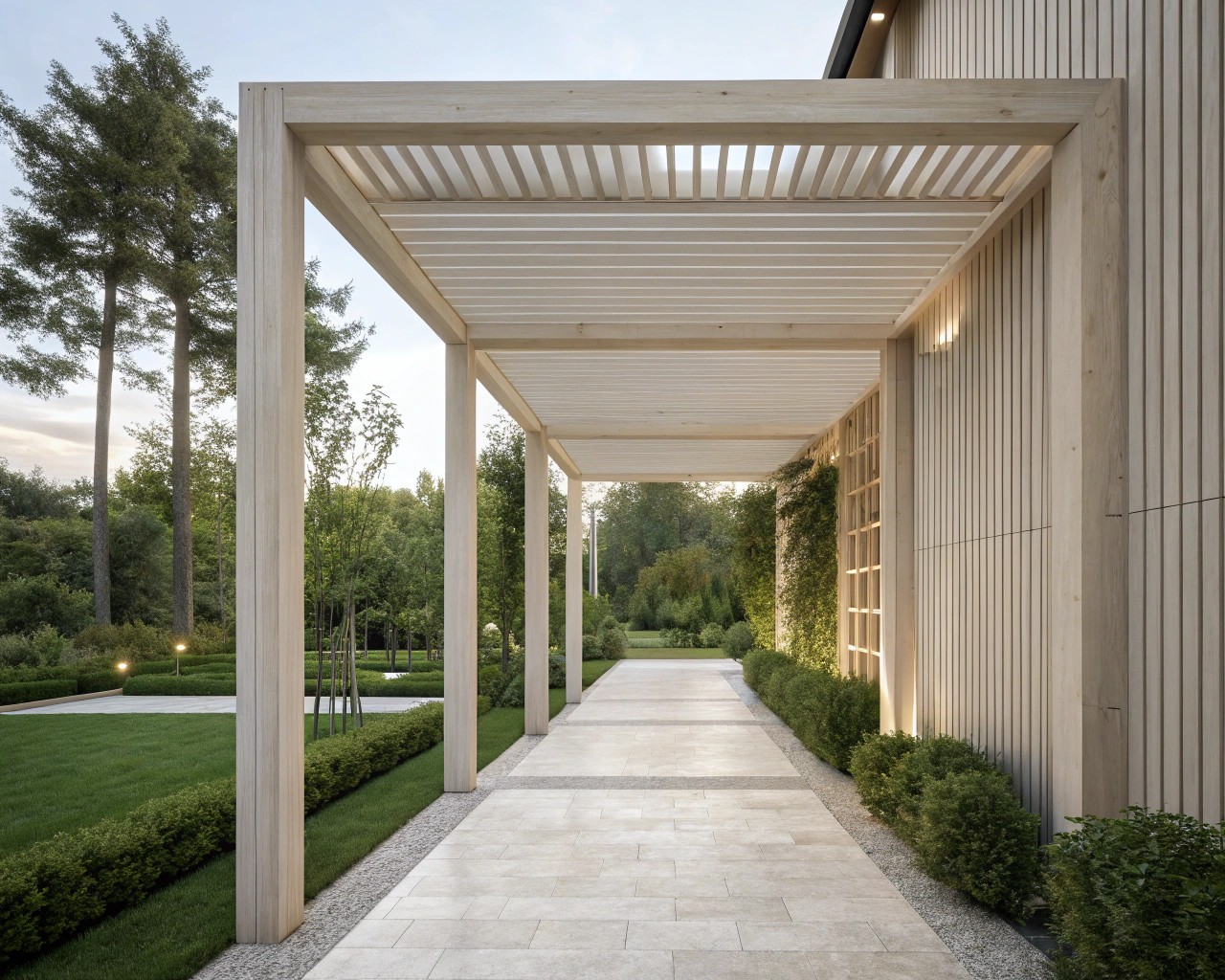
Technology Integration Without Compromise
Modern pergolas represent the convergence of architectural beauty and technological sophistication. The most advanced systems feature motorized louvered roofs that respond to environmental conditions through integrated sensors. Rain sensors automatically close louvers to protect furniture, while solar sensors adjust for optimal shade coverage throughout the day.
These systems integrate seamlessly with smart home ecosystems, allowing voice control through Alexa or Google Home. However, the key to successful implementation lies in discretion—the best smart pergolas hide their technology within clean, minimalist aesthetics.
Structural Design Principles
Contemporary pergola design emphasizes:
- Clean geometric lines with strong horizontal elements and uncluttered silhouettes
- Shade versatility through retractable canopies or adjustable louver systems
- Integrated seating with built-in benches and modular arrangements
- Thoughtful lighting design using recessed LED strips and pendant fixtures
Material Selection for Longevity
The most durable pergolas combine aluminum frameworks with composite or sustainably sourced wood accents. This hybrid approach provides structural integrity while maintaining visual warmth. Powder coating techniques now offer superior weather resistance with minimal environmental impact.
Vertical Gardening and Living Architecture
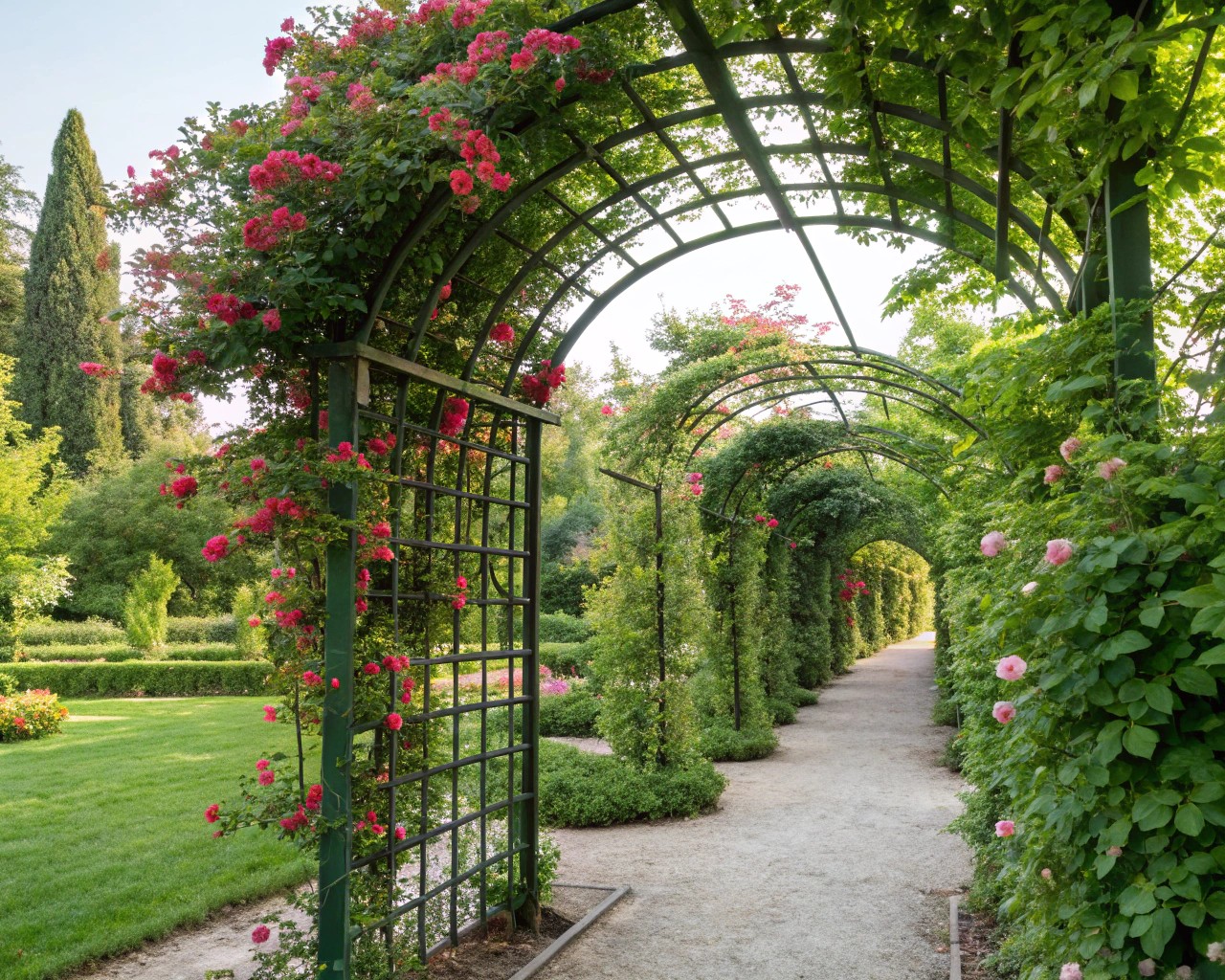
Maximizing Space Through Vertical Solutions
Vertical gardening addresses the reality of shrinking lot sizes while creating stunning visual impact. The most effective vertical installations incorporate multiple growing systems: wall-mounted planters, trellis-supported climbing plants, and freestanding tower gardens.
Plant Selection Strategies
For vertical installations, I recommend focusing on:
- Edible options: Herbs, leafy greens, cherry tomatoes, and compact vegetable varieties
- Structural plants: Ornamental grasses and architectural succulents
- Seasonal color: Annual flowers for changeable displays throughout the year
Technical Considerations
| Factor | Recommendation | Rationale |
|---|---|---|
| Irrigation | Drip systems with moisture sensors | Prevents over/under watering |
| Growing Medium | High-quality potting soil with hydrogel additives | Retains moisture while preventing root rot |
| Support Structure | Powder-coated steel or aluminum frameworks | Weather resistance and load capacity |
| Drainage | Individual container drainage with overflow management | Prevents structural damage and plant loss |
Fire and Water Feature Integration
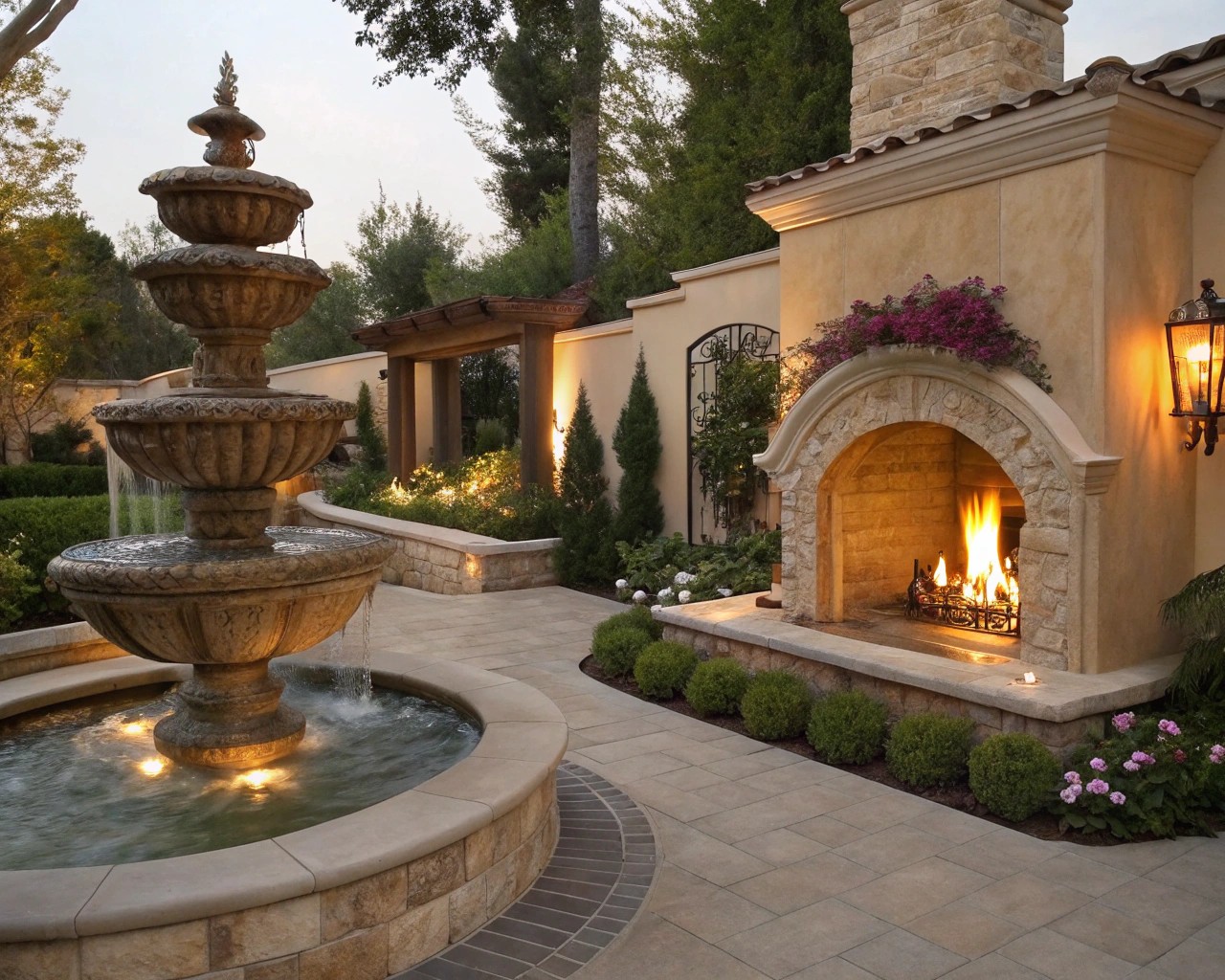
The Appeal of Elemental Contrasts
Fire and water features create powerful focal points that define outdoor spaces. The most successful installations balance these opposing elements through thoughtful placement and scale considerations. Fire bowls positioned atop water features represent the ultimate design statement, combining primal allure with tranquil ambiance.
Design Implementation Tips
- Safety first: Maintain adequate clearance from structures and combustible materials
- Professional installation: Complex fire-water combinations require experienced contractors
- Material selection: Choose weather-resistant options like natural stone, concrete, or powder-coated metals
- Maintenance planning: Design for easy access to pumps, gas lines, and cleaning requirements
Native Plant Landscaping Movement
The Ecological Imperative
Native plant adoption continues accelerating, with 17% of adults now purchasing region-specific species. These plants provide crucial habitat for pollinators, require less water and maintenance, and create landscapes that feel authentically connected to their environment.
Implementation Strategies
Successful native plant landscapes follow these principles:
- Right plant, right place: Match species to specific microclimates within your space
- Layered planting: Create depth with canopy trees, understory shrubs, herbaceous plants, and groundcovers
- Mass groupings: Cluster identical species for visual impact and ecological benefit
- Seasonal interest: Select varieties that provide year-round structure and seasonal highlights
Outdoor Kitchen Evolution
Beyond the Basic Grill
Modern outdoor kitchens rival their indoor counterparts, featuring professional-grade appliances, ample preparation surfaces, and integrated storage solutions. The trend toward modular designs allows for customization based on space constraints and usage patterns.
Essential Elements for 2025
Contemporary outdoor kitchens incorporate:
- Multi-fuel cooking options: Gas grills, wood-fired ovens, smokers, and side burners
- Weather protection: Pergolas, retractable awnings, or permanent roof structures
- Smart technology: Wi-Fi-enabled appliances, integrated lighting, and sound systems
- Sustainable materials: Recycled countertops, energy-efficient appliances, and water-saving fixtures
Lighting Design for Extended Use
Proper illumination transforms outdoor kitchens from day-only spaces into evening entertainment hubs. Layer different lighting types:
- Task lighting: Under-cabinet LEDs for food preparation
- Ambient lighting: String lights or pendant fixtures for general illumination
- Accent lighting: Uplighting for architectural features and landscape elements
Multi-Functional Space Planning
Adaptable Design Principles
The most successful outdoor spaces serve multiple functions throughout the day and seasons. Design for flexibility by incorporating modular furniture, retractable weather protection, and adequate electrical infrastructure for changing needs.
Zone Creation Strategies
Effective outdoor rooms define distinct areas for different activities:
- Cooking zones: Centralized around kitchen appliances with adequate ventilation
- Dining areas: Protected from wind with comfortable seating for various group sizes
- Relaxation spaces: Positioned for optimal views with comfortable seating and ambient lighting
- Activity areas: Designated spaces for exercise, work, or children’s play
Future-Proofing Your Investment
Climate Resilience Planning
Design outdoor spaces that adapt to changing weather patterns. This includes selecting plants that tolerate both drought and excessive moisture, choosing materials that handle temperature extremes, and incorporating flexible weather protection systems.
Technology Integration Timeline
Plan electrical and data infrastructure during initial construction. Running conduit for future smart home integration costs significantly less than retrofitting completed installations. Consider locations for:
- Electrical outlets: GFCI-protected and weather-resistant
- Data cables: For Wi-Fi extenders and smart device connectivity
- Lighting controls: Centralized switching and dimming capabilities
- Audio/visual systems: Speaker wire and display mounting points
Your outdoor transformation from simple patio to sophisticated pergola-anchored living space represents more than aesthetic improvement—it’s an investment in lifestyle enhancement and property value. The trends shaping outdoor design in 2025 prioritize sustainability, technological integration, and biophilic connection, creating spaces that serve as true extensions of indoor living while celebrating our relationship with the natural world.
The key to successful implementation lies in balancing immediate desires with long-term functionality, choosing materials and systems that will perform beautifully for decades while supporting the evolving needs of your household and the broader environment.
(

